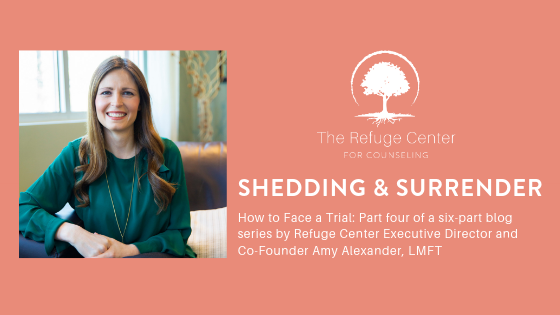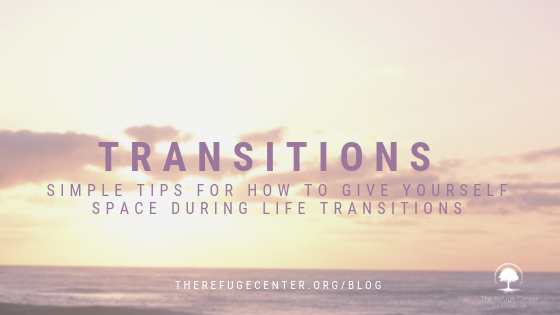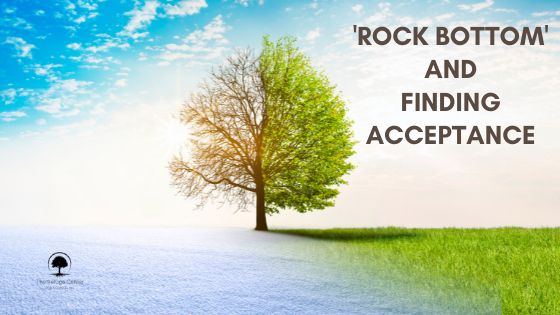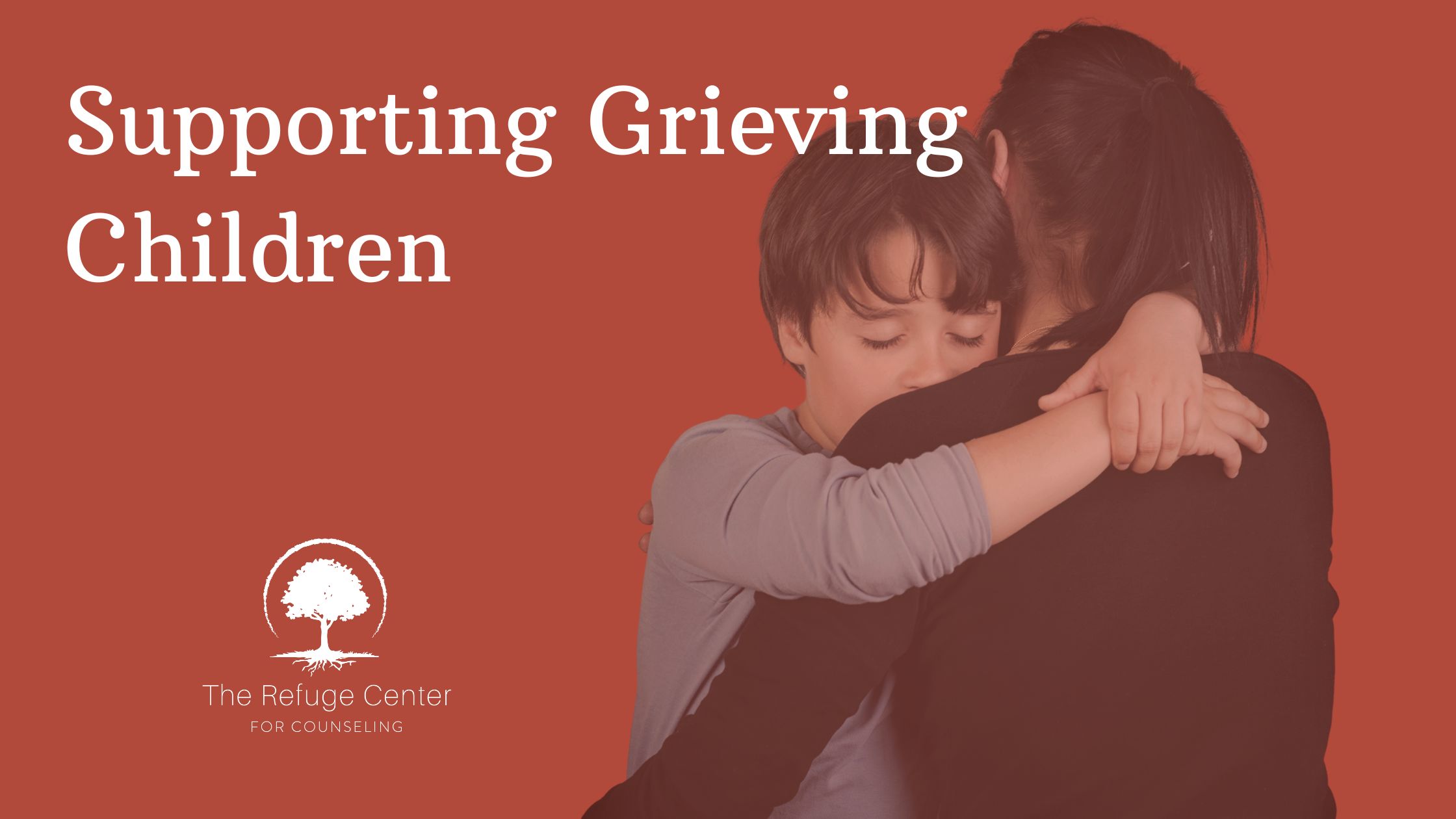Part four in a six-part blog series by Refuge Center Executive Director and Co-Founder Amy Alexander, LMFT
This blog series has focused on how to face the trials and storms we will encounter in our lives.
So far, we’ve looked at leaning into our feelings, developing grief rituals and being intentional about movement and rest. This post will focus on the power that pain can have in our life if we surrender to the process of transformation.
Pain can shift our perspectives the way that an earthquake rocks our foundations or the way a tornado rips apart things we thought were steady and sure.
No matter what kind of pain you face there is a rich opportunity to be forever transformed for the better.
Brennan Manning said, “Many people between the ages of thirty and sixty-whatever their stature in the community and whatever their personal achievements- undergo what can truly be called a second journey. The second journey begins when we know we cannot live the afternoon of life according to the morning program.”
I can think of seasons in my life when my identity was closely tied to a certain institution, ideology or title. Inevitably, I would bump up against some tough feedback, a new perspective, or have a loss in a relationship and I would enter a period hard reflection.
There was usually a part of me that would resist this invitation to transformation. There was so much uncertainty and I preferred what was familiar to me. It can be terrifying to surrender to this change process. And yet, there is a profound freedom that occurs when we yield to the idea that our storms can actually allow us to receive and experience life in a richer way- to move us deeper into the more abundant life that Jesus teaches of.
Thomas Merton took note of those who fought against this current of surrender. “This is where so many holy people break down….As soon as they reach the point where they can no longer see the way and guide themselves by their own light, they refuse to go any further….It is in this darkness that we find true liberty. It is in this abandonment that we are made strong. This is the night that empties us” (2007, p.168).
What if we are afforded the chance to be emptied of on this journey?
The ideals, habits, attachments, and perceptions that no longer work.
What we might have needed at one time in order to survive something, we find has now perhaps become burdensome and ineffective.
Sue Monk Kidd, in her book, “When The Hearts Waits” talks about crisis and opportunity. She reflects that the word, “crisis” derives from the Greek words, “krisis” and “krino,” which mean “a separating.” She says, “The very root of the word implies that our crisis are times of severing from old ways and states of being. We need to ask ourselves what it is we’re being asked to separate from. What needs to be left behind?” (2006).
Poet and author Mark Nepo called this the “shedding process.” He says, “The way to stay close to the pulse of life is to change whatever has ceased to function in us. To shed whatever we are carrying that is no longer alive. To cast off our dead skin because dead skin can’t feel. Dead eyes can’t see. Dead ears can’t hear. And without feeling, there is no chance of wholeness.”
He also says, “In essence, shedding opens us to self-transformation. Paradoxically, those of us who refuse such renewal will, sooner or later, be forced to undergo transformation anyway as a result of being broken or eroded by the world. Very often both occur at the same time: that is, we shed from within while being eroded from without” (2011, p.104).
Trials are transformative when they can move us closer to what really matters.
This requires sacrifice.
The sacrifice allows us to, with intentionality and mindfulness, ask ourselves what is most valuable, most sacred in our lives and reframe our pain as an opportunity to create more space for that which matters most.
The sacrifice is the process of sitting in the ashes of our loss and digging for our souls. In this, the phoenix process begins. Something in us is reborn, made new.
The alternative to this is clinging. Sue Monk Kidd says, “Clinging creates a shrinking within the soul, a shrinking of possibility and growth.” I saw a beautiful picture on Pinterest of a tree with the leaves beginning to fall. The caption on the picture read, “The trees are about to show us how lovely it is to let dead things go.”
Nature has so much to teach us about this process. The earth surrenders to the seasons- to the rhythm and cycle of release, stillness, blossoming and growth. Health, life and fruitfulness is to be found in trusting that with each new season we have an opportunity to MORE FULLY BECOME.
This surrender, this sacrifice, this shedding- it is not a passive process. It is entirely intentional.
Without an awareness of and commitment to the process, we may feel victimized by what is lost. But with a compassionate and wise attunement to the flow of the river of change we can embrace the grace to move closer to what really matters. In this, our faith will grow, our gratitude will be more anchored and we will find more space in our lives and souls for that which is essential – love.




